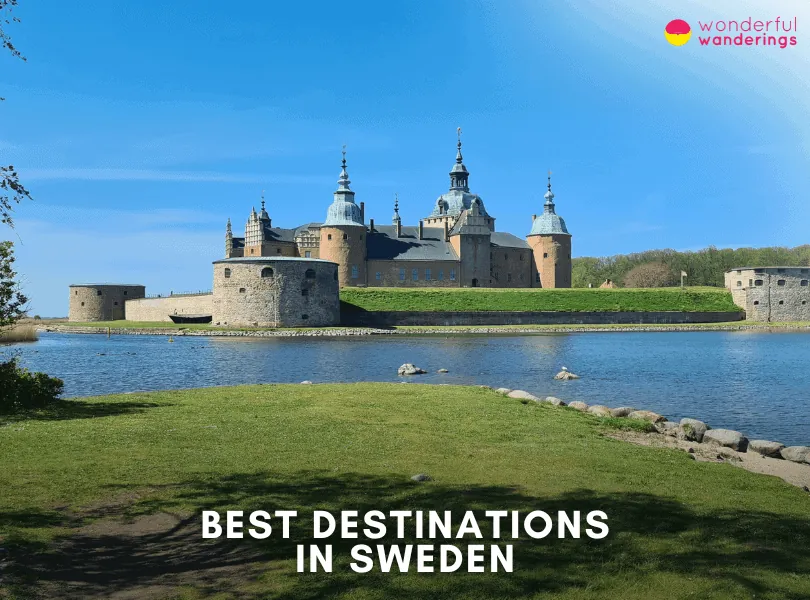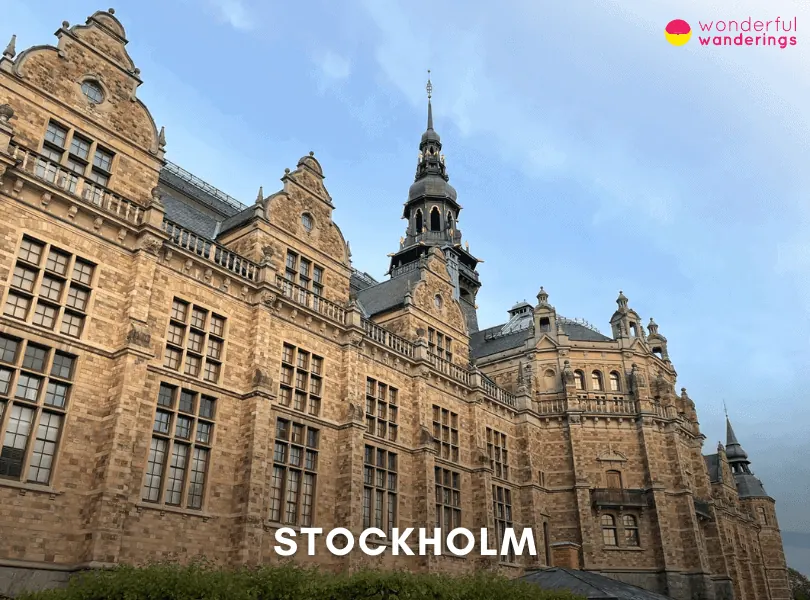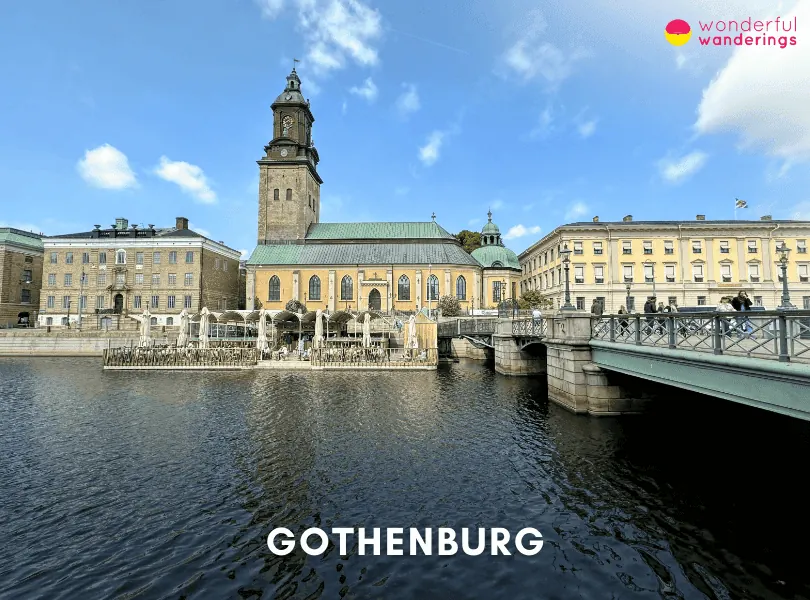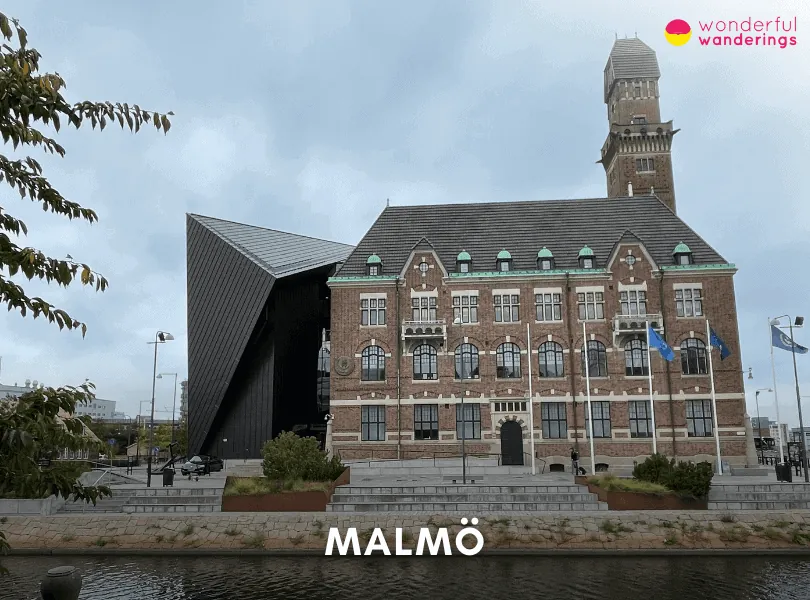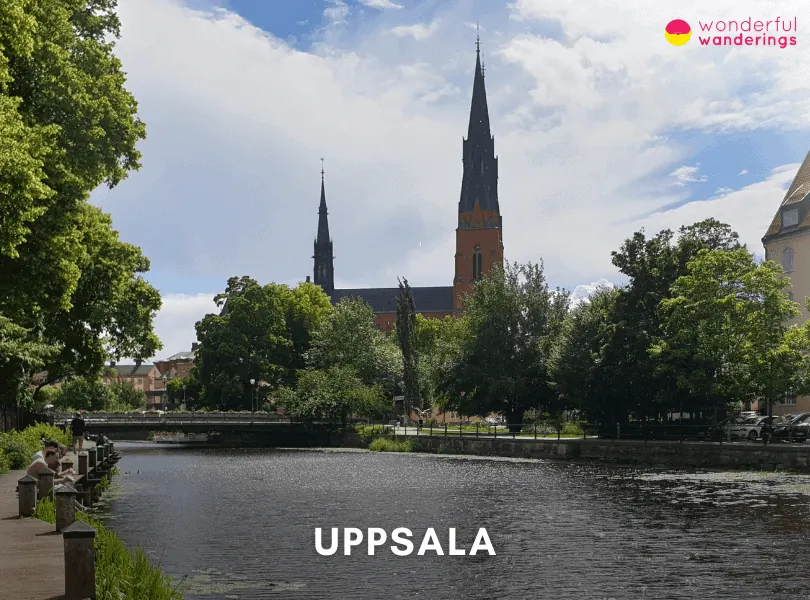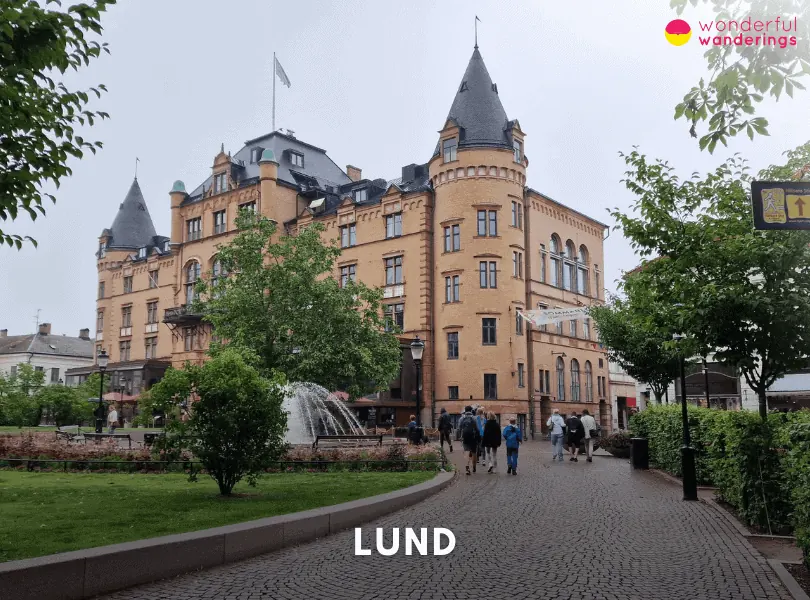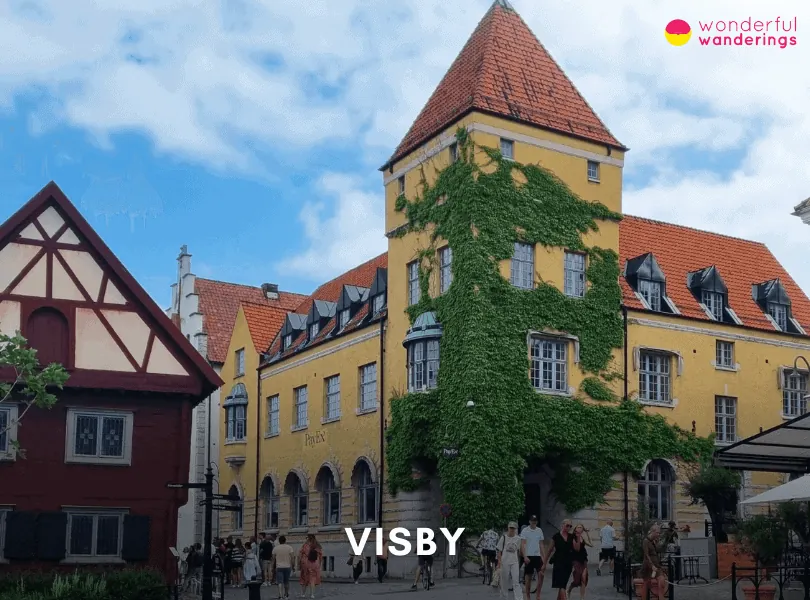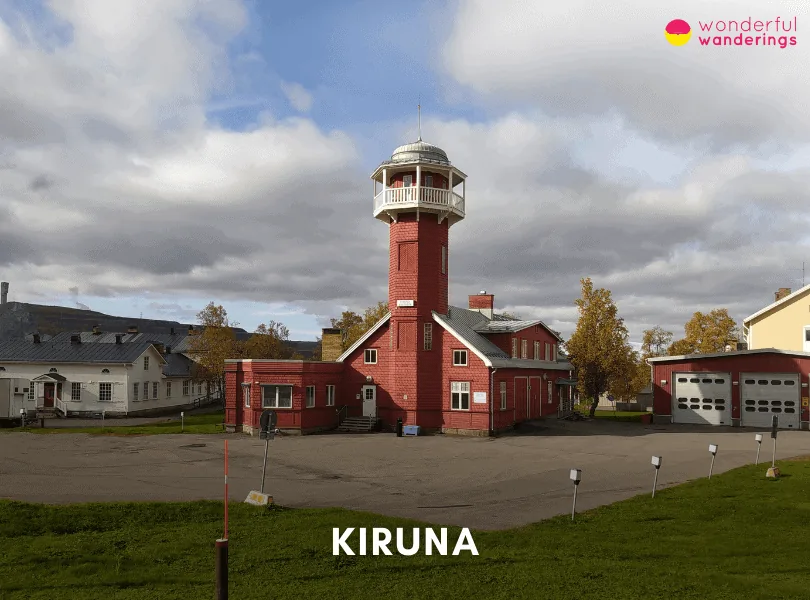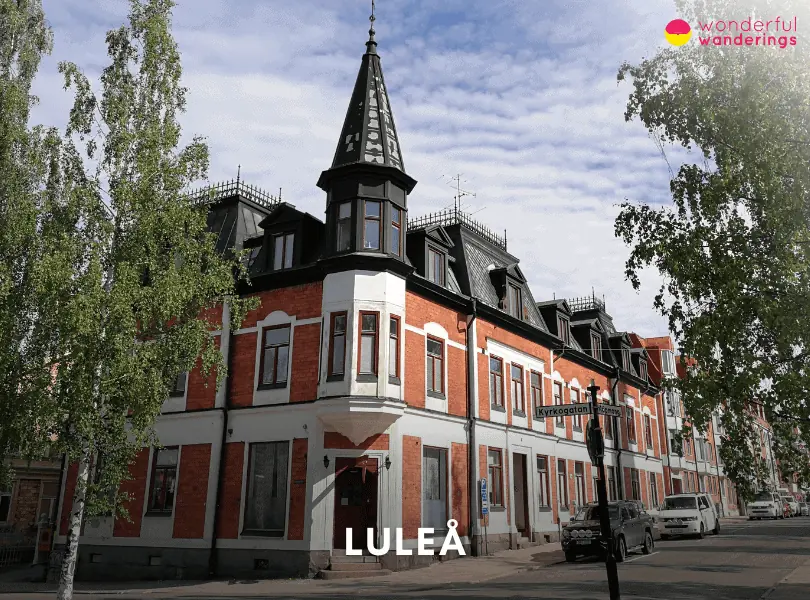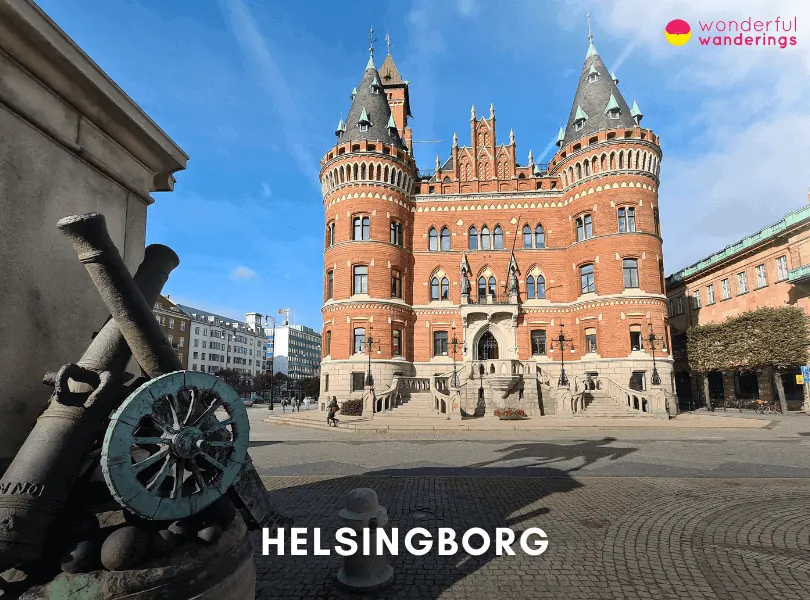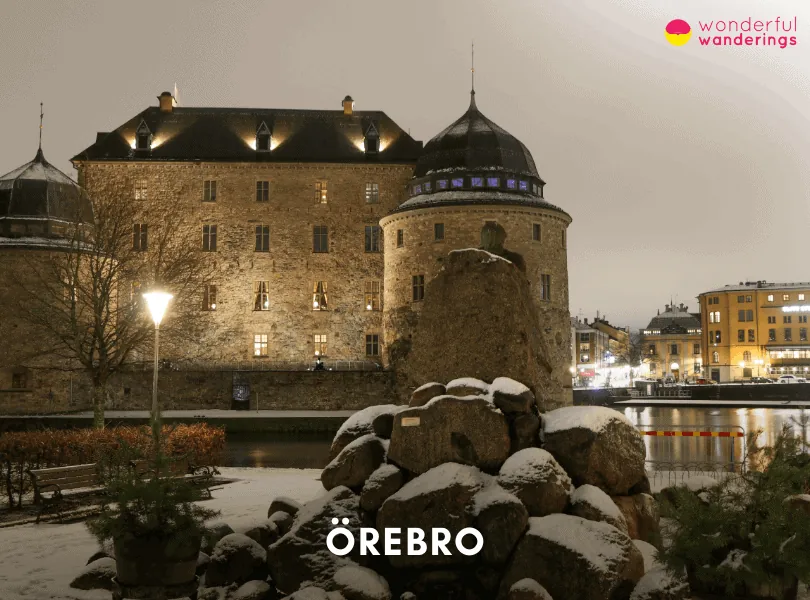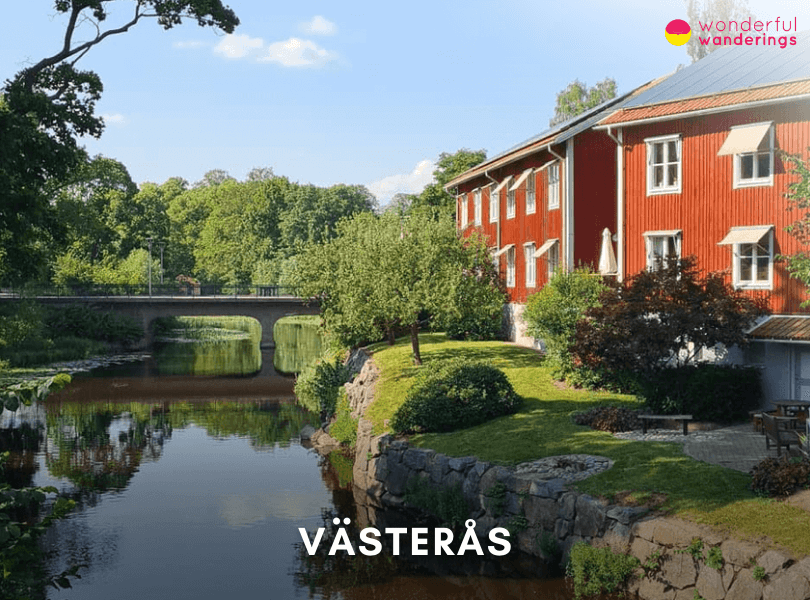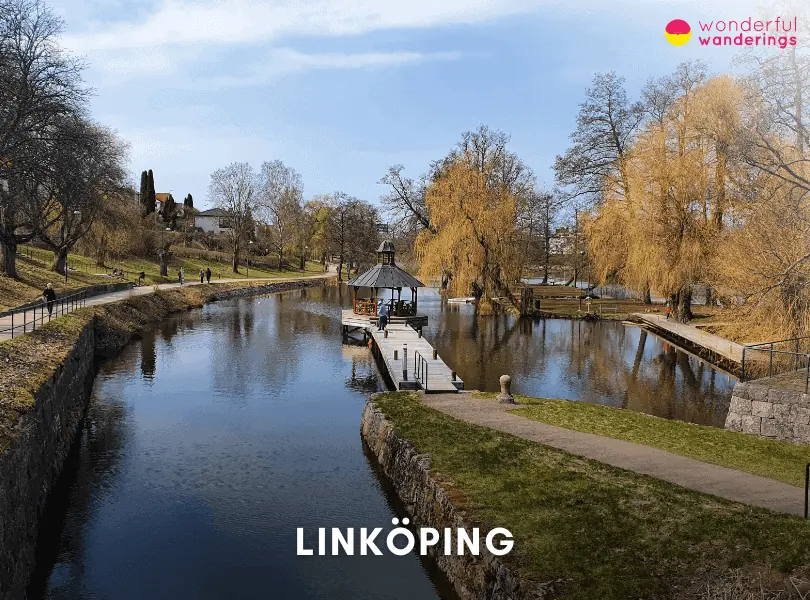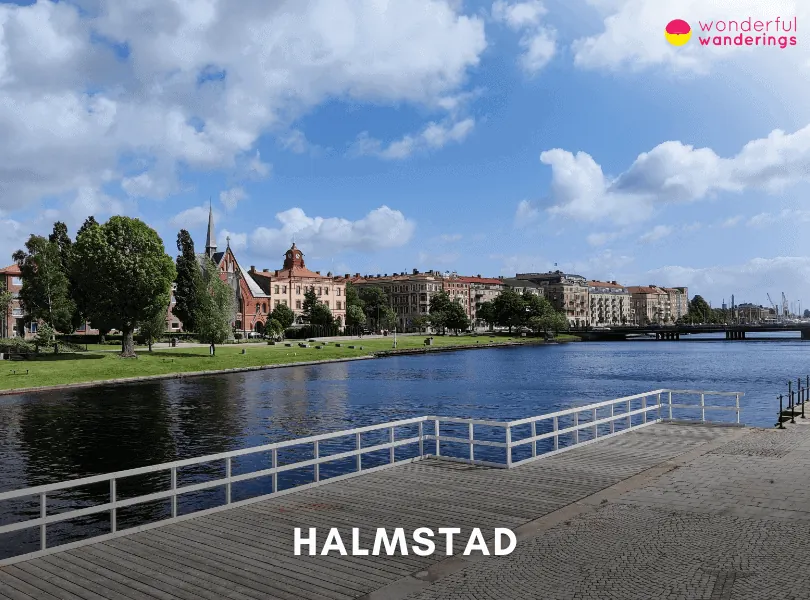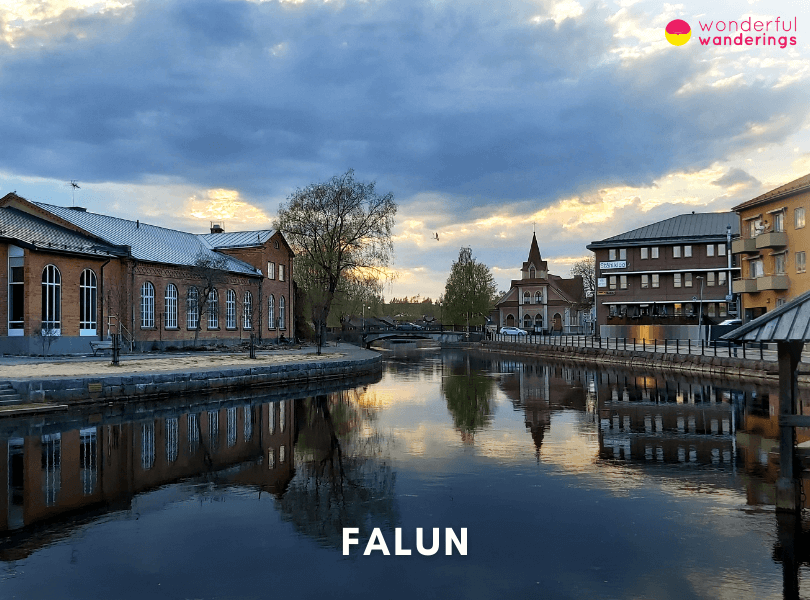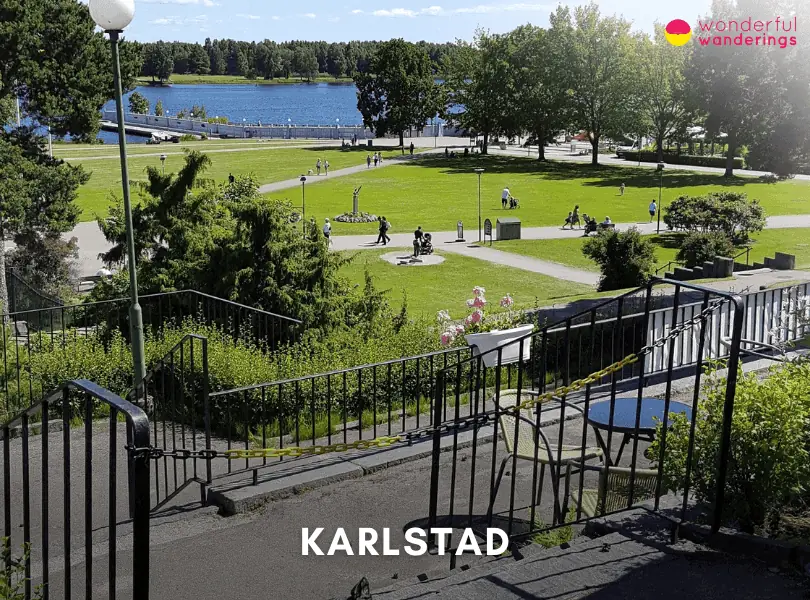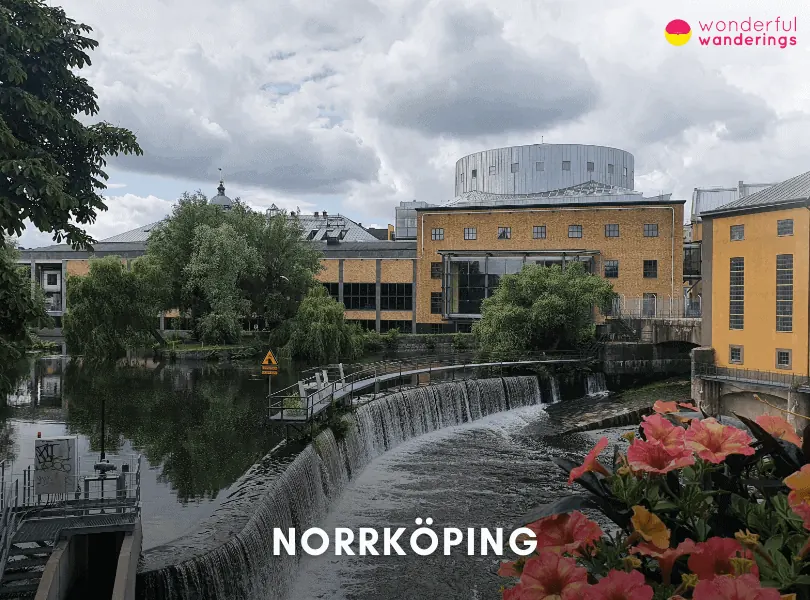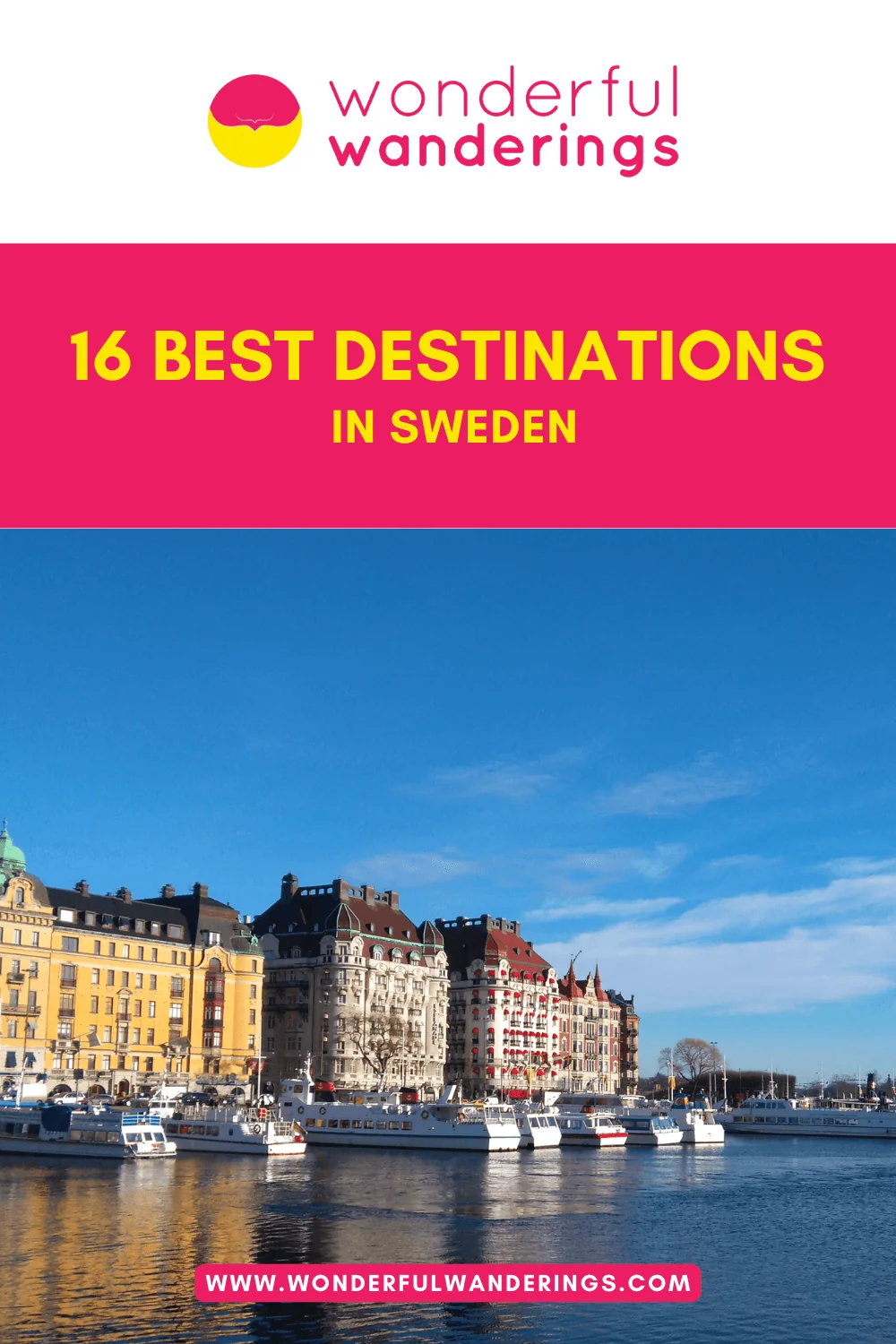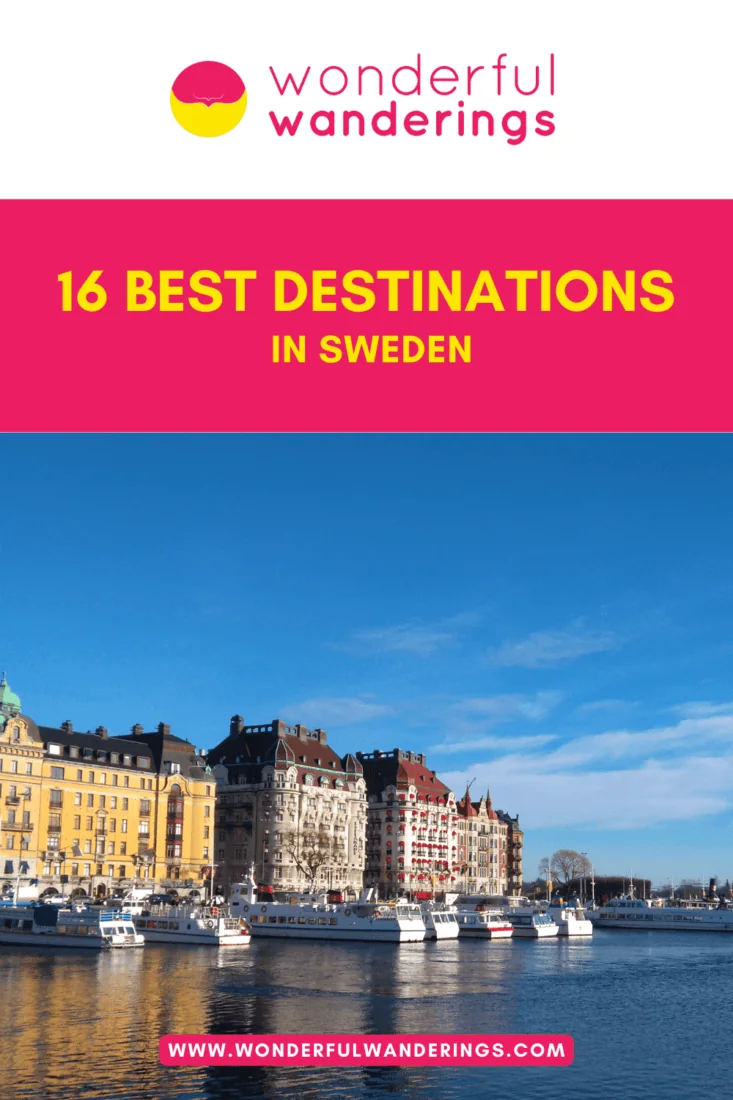Sweden is in Northern Europe on the Scandinavian peninsula. It has a long coastline along the Baltic Sea to the east and the North Sea to the west. Sweden has a total land area of 450,295 sq km and is the fifth largest country in Europe. It borders Norway and Finland and is connected to Denmark via the Öresund Bridge. The country has a rich history going back to the Vikings in the Middle Ages when Sweden emerged as an independent kingdom in the 12th century. It built a powerful empire encompassing the Baltic coastal areas and islands during the 17th and early 18th centuries. Sweden has transitioned over time from a largely agrarian society to an industrialized one with advanced infrastructure and a high standard of living. Sweden is a constitutional monarchy with King Carl XVI Gustaf as head of state. The capital and largest city is Stockholm. Other major cities include Gothenburg, Malmö, Uppsala and Lund.
Sweden draws over 6 million international visitors annually. Popular places to visit include Stockholm, with attractions like Gamla Stan (Old Town), Royal Palace, Vasa Museum and Stockholm Archipelago. Other top destinations are Gothenburg, medieval Visby town on Gotland island, hiking trails and Northern Lights in Swedish Lapland, museums and universities in Uppsala and Lund, west coast beaches in Göteborg and historic Swedish towns like Örebro and Norrköping, among many others. Additional featured destinations are Örebro in south-central Sweden, containing Örebro Castle and Wadköping open-air museum. Västerås, in east-central Sweden, is known for its Gothic-style cathedral. Linköping in the south near a 13th-century cathedral and air force museum, Halmstad on the west coast with well-preserved wooden houses in its town center, Falun in south-central Sweden built around an expansive copper mine, Karlstad in west-central Sweden along Sweden’s largest lake Vänern and Norrköping in east central Sweden containing preserved 17th-19th century historical lanes and buildings.
Popular activities in Sweden include island-hopping through the Stockholm archipelago, hiking through national parks, visiting medieval towns and sampling Swedish delicacies like meatballs, salmon and cinnamon buns. The best time to visit Sweden is during the summer, from June to August. The weather during this period is mild to warm, with temperatures of 15-23°C in the southern region of Götaland. This season offers long daylight hours, allowing more time to explore the country’s natural beauty and outdoor attractions.
1. Stockholm
Stockholm is the capital and largest city of Sweden. It is on Sweden’s southeast coast, where Lake Mälaren meets the Baltic Sea. The city center is built across 14 islands connected by 57 bridges, nicknamed “Venice of the North”. Stockholm was founded in the 13th century and became a trade hub between the Baltic and North Seas. It became Sweden’s capital in 1436. Over the following centuries, Stockholm was shaped by periods of prosperity and destruction from numerous fires and warfare. The late 19th and early 20th centuries saw industrialization and rapid expansion as the population grew.
The city has several top-ranking universities, museums and cultural institutions. One of its most prized museums, the Vasa Museum, is the most visited in Scandinavia. The city is also known for its well-preserved historic sites, including the Old Town (Gamla Stan) and the Royal Palace. The Stockholm metro system is famous for its unique art installations, with over 90 of the network’s 100 stations decorated with sculptures, rock formations, mosaics, paintings and reliefs by over 150 artists. Stockholm has abundant natural beauty interwoven with urban areas. The city is known for music, design, fashion and technology innovations. Major attractions include the medieval old town Gamla Stan, the Royal Palace, Skansen open-air museum, Vasamuseet’s 17th-century warship Vasa, Moderna Museet’s modern art and urban green spaces.
Stockholm has a total population of 1,536,891 as of 2023. The GPS coordinates of Stockholm are approximately 59.3293° N, 18.0686° E. Stockholm Arlanda Airport is located 40 km (25 mi) north of Stockholm and the best way to get to the city from the airport is by the Arlanda Express train, which takes 20 minutes. The best way to get to Stockholm is by train and the city is well-served by commuter, regional and intercity trains.
The city’s geographic location, cultural significance and diverse attractions make it a popular tourist destination. The best time to visit Stockholm is during the summer, from June to August when the weather is mild and the city comes alive with various cultural and outdoor activities. Visitors spend 3 to 4 days in Stockholm to explore its main attractions, including the historic old town, royal palaces, museums and the beautiful archipelago. The city is well connected by public transportation, including the metro, buses and ferries, making it easy to get around and explore its various neighborhoods and islands.
2. Gothenburg
Gothenburg is Sweden’s second-largest city on the country’s west coast at the mouth of the Göta älv River, which flows into the Kattegat Sea area. Gothenburg was founded in 1621 by King Gustavus Adolphus of Sweden, though the site has been inhabited since ancient times. The city was built in a Dutch style, with expertise and workers from the Netherlands to construct the streets, canals and infrastructure. This was due to the Dutch experience with building on marshlands and waterways. Gothenburg quickly became an important shipping and trading center between Sweden and the rest of Europe in the 17th and 18th centuries.
Gothenburg is considered Sweden’s center of industry and trade. Major companies like the Volvo Group, Volvo Cars, SKF and Essity are headquartered there. It is also home to the University of Gothenburg, Chalmers University of Technology and the port of Gothenburg, the largest seaport in the Nordic countries. Gothenburg hosts events like the annual Gothenburg Film Festival and Gothia Cup, the world’s largest youth soccer tournament. The city is also renowned for its seafood cuisine with fresh shrimp, lobster and crayfish from the nearby Bohuslän coast. Gothenburg has numerous attractions for visitors. The Liseberg amusement park in the city center features over 40 rides and entertainment. The 17th-century Älvsborg fortress lies offshore near the harbor inlet. Visitors can explore the idyllic islands of the Gothenburg archipelago, reaching over 20 islands via ferry. The city’s Haga district enchants visitors with preserved wooden houses and boutique shops. Art lovers can visit the Gothenburg Museum of Art or wander through the many creative establishments in the Linné district.
Gothenburg has a total population of 581,069 as of 2023. The coordinates for central Gothenburg are 57.70887° N, 11.97456° E. It is located about 470 km (293 miles) southwest of Stockholm Arlanda Airport. Trains are the best way to travel directly between the city centers of Gothenburg and Stockholm for fast, easy and frequent connections. Direct high-speed SJ trains run frequently between Gothenburg Central Station and Stockholm Central Station, with the journey taking 3 hours. Tickets can be booked in advance online.
The best time to visit Gothenburg is late spring through early fall, especially June to August when the weather is pleasant and sunny. Many attractions are open year-round but can be less crowded and more affordable during the off-season months. Its compact size shows most of Gothenburg’s top sites in 2-3 days. It is recommended to spend one day exploring the harbor area, the historic Haga district and the Gothenburg Museum of Art. Another day can be spent at Liseberg Amusement Park, Slottsskogen Park and Zoo. The third day lets visitors enjoy the city’s cafés, shops, entertainment venues and other nearby tourist spots.
3. Malmö
Malmö is the third largest city in Sweden, in southern Sweden on the Öresund strait, facing Copenhagen, Denmark. The two cities are connected by the Öresund Bridge, an 8 km (4 miles) long road and rail link. The history of Malmö traces back to the 13th century when it was founded as a fortified port city and part of Denmark. It was an important trading hub and commercial center during the Middle Ages. Sweden conquered Malmö and the surrounding province of Skåne from Denmark. This led to an economic decline in the city. Malmö saw industrial growth and development in the mid-19th century by constructing a railroad and expanding the harbor. Since 2000, investments in infrastructure like the Öresund Bridge, restaurants, IT companies, museums and higher education have helped transform Malmö into a center of culture, business and sustainability.
The main attractions in Malmö include the historic old town area called Gamla Staden, with cobbled streets, squares and medieval architecture. Key landmarks are Stortorget town square and nearby Lilla Torg square, which are full of restaurants and cafes, plus 15th century St. Peter’s Church. Another top site is Malmöhus Castle from the 16th century, now home to museums and an aquarium. Modern landmarks include the twisty 190-meter-tall Turning Torso skyscraper and the Western Harbor area, redeveloped from old dockyards into a neighborhood with parks, eateries and bathing spots.
Malmö has a total population of 306,062 as of 2023. The city covers 332 sq km (128 sq mi), with over half of that area comprising waterways and harbors opening into the Öresund strait. The GPS coordinates of central Malmö are 55°35′N and 13°00′E. Malmö is 555 km (344 mi) from Stockholm Arlanda Airport and 583 km (362 mi) from central Stockholm. The best way to get to Malmö is by train. Malmö is well-connected to other Swedish cities and Copenhagen, Denmark, via the Øresund Bridge, making the train the best way to get to the city. The city has an extensive network of buses within the city and is also the destination of many regional bus lines from the rest of Skåne.
The summer months of June through August are the best time for visiting Malmö. The weather is mildest, daylight hours are long and main attractions and outdoor events are in full swing. Many people also like visiting in December to experience a traditional Christmas market and festive atmosphere. Visitors must allot two full days minimum to experience Malmö’s top sights. Must-see attractions include a walking tour of the atmospheric Gamla Staden historic district and Lilla Torg. Visit Malmöhus Castle and the museum exhibits within it. See innovative architecture like the Turning Torso building. Wander the neighborhood of Västra Hamnen to find art, parks, restaurants and bathing spots. Excellent day trips via train include nearby university town Lund and the charming seaside village Skanör-Falsterbo.
4. Uppsala
Uppsala is the fourth largest city in Sweden and the seat of Uppsala County. It is 70 km (43 mi) north of Stockholm on the Fyris River. Uppsala has a long history dating back to the 3rd century AD, as it was an important religious center in Norse paganism. Archbishop Stefan founded Uppsala Cathedral, establishing the city as the ecclesiastical center of Sweden. Uppsala University was founded in 1477 and is the oldest university in Scandinavia. For centuries, Uppsala’s university and cathedral solidified its status as an academic and spiritual hub. Numerous royal coronations, diets and burials took place in Uppsala. Uppsala became a center for education, research, IT and pharmaceutical companies.
Major attractions in Uppsala include the 13th-century Gothic Uppsala Cathedral with its impressive architecture, royal tombs and museum. Uppsala Castle dates to 1549, with its tall towers overlooking the city. The Carolina Rediviva library at Uppsala University has rare books and manuscripts like the Codex Argenteus. The university’s main building and botanical gardens are also top sites. The Uppsala Konstmuseum exhibits modern Nordic art. Linnaeus Garden highlights native Swedish flora admired by its 18th-century namesake. Gamla Uppsala features ancient burial mounds from Norse royalty.
Uppsala has a total population of 151,399 as of 2023. The Fyris River divides Uppsala and meanders through the landscape. The GPS coordinates for central Uppsala are 59°51′N and 17°38′E. Uppsala lies about 42 km (26 mi) from Stockholm Arlanda Airport and 70 km (43 mi) from the capital city. The best way to get to Uppsala from Stockholm is by train, which offers a convenient and efficient mode of transportation. High-speed trains cover the distance between the two cities in 30 to 50 minutes.
The best time to visit Uppsala is during the summer, from June to August when the weather is the most pleasant for outdoor activities and sightseeing. The city experiences long daylight hours and milder temperatures, making it ideal for exploring its historical and cultural attractions. A flexible 2 to 3-day itinerary allows you to see more. Must-see sites include Uppsala Cathedral and its museum, Uppsala Castle, Carolina Rediviva Library and the main university building. Stroll scenic city center streets and shops around the riverfront. Visit Linnaeus Garden and Gamla Uppsala burial mounds. Day trips go to Stockholm, Sigtuna or Gävle. Visitors can also take a boat to Stockholm archipelago towns like Vaxholm.
5. Lund
Lund is a city in southern Sweden,16 km (10 mi) northeast of Malmö and 37 km (23 mi) from Copenhagen, Denmark. The history of Lund dates back to around 990 AD when the area was part of Denmark. The city was likely founded by King Sweyn I Forkbeard and served as an important center of trade and religion over the following centuries. It had particular significance as a hub of Christianity, boasting the seat of the Archbishop of Scandinavia for a period. Over its long history, control of Lund passed between Danish and Swedish rulers numerous times. The city also endured attacks, periods of decline and revival. Today, Lund forms a major educational and commercial center in the region.
Some of Lund’s main attractions stem from its long history. The Lund Cathedral is its most famous landmark, consecrated in 1145, with parts still intact from the 12th-century construction. Visitors also flock to see the ruins of medieval stone churches and monasteries, the old town center with preserved wooden houses, the historic university buildings and museums showcasing local history and culture like the open-air museum Kulturen. The scenic university park Lundagård offers beautiful surroundings for a stroll.
It sits in the province of Scania and has a population of 88,503 as of 2023. The city covers an area of around 26 sq km (10 sq mi). Lund’s geographic coordinates are 55°42′N 13°11′E. The distance from Lund to Stockholm Arlanda Airport is 600 km (373 mi), the same distance to the city center. The best way to get to Lund is by train (Arlanda Express Train). The train is well-connected by rail, with frequent direct trains to Stockholm and Copenhagen.
The best time to visit Lund is during the summer when the weather is warm and pleasant. Visitors typically spend 2-3 days in Lund, exploring the city’s rich history, visiting its many parks and nature areas and experiencing its cultural scene. The city is known for its lively student population and the main city center has numerous restaurants, shops and bars. Lund is also home to several significant cultural institutions, including the Lund University Male Voice Choir and the Lund University Observatory.
6. Visby
Visby is a city on the Swedish island of Gotland in the Baltic Sea, 90 km (56 mi) east of the mainland and 130 km (81 mi) from Stockholm. The history of Visby dates back to the Viking Age when it emerged as an important harbor and place of trade. In the 12th and 13th centuries, it functioned as the most vital trading center in the Baltic region and developed its own laws and signed trade treaties on equal terms with the dominant Hanseatic cities abroad. However, Visby’s importance declined after it was invaded and pillaged by the Victual Brothers, a group of privateers, in 1361. Over time, trade relocated towards the end of the 14th century. Still, Visby continued to serve as Gotland’s main town and commercial center. In the modern era, tourism emerged as a key industry.
Visby is renowned for its well-preserved medieval ring wall and old town center, which led to its UNESCO distinction. Walking atop the 3.5 km (2.2 mi) long stone wall provides scenic views of Visby and the sea beyond. Inside the wall lies a web of narrow, cobblestone streets and many restored merchant houses from the Hanseatic days. Visitors can also explore the ruins of numerous Medieval churches abandoned after the Reformation. Museums in Visby also showcase local history.
Visby has a population of about 24,300 as of 2023, covering 12.44 square km (4.8 square miles). Its geographic coordinates are 57°38′N 18°17′E. The city is 189 km (117 mi) from Stockholm, sharing the same distance as the capital city. The best way to get to Visby is by air or sea. Visby Airport offers domestic and international flights and the town is also accessible by ferry from the Swedish mainland. Visby Airport is 3 km (2 mi) outside the city and flights connect Visby to Stockholm and Gothenburg. The city also has ferry links to mainland Sweden and surrounding islands.
The best time to visit Visby is during the summer, from June to August when the weather is mild and the island is bustling with events and activities. This is also the best time to experience the medieval week, a popular event in Visby. It is recommended to spend two to three days to experience Sweden. Recommended activities for a two-day itinerary include walking along the ring wall for panoramic views of Visby and venturing inside the old town to wander medieval streets and squares. See key landmarks like St. Mary’s Cathedral, the Powder Tower and old warehouses. Visit boutiques, galleries, cafés or restaurants housed in preserved medieval homes. Visitors can also explore museums like the Gotland Museum to learn about Visby’s mercantile history as a walled Hanseatic town. Take day trips to drives along coastal roads or to marvel at sites like the fortress church Fröjel Church. Join a guided ghost tour at night to hear spooky tales from Visby’s past.
7. Kiruna
Kiruna is in northern Sweden, 145 km (90 mi) north of the Arctic Circle. It is in the Norrbotten County province of Lapland, on the eastern shore of Lake Luossa and between the iron ore mountains of Kiirunavaara and Luossavaara. The history of Kiruna begins in the 17th century when iron ore deposits were discovered in the nearby mountains. The mining company LKAB was founded in 1890 and began planning a town adjacent to the mine. Kiruna was founded in 1900 to house workers at the mine. The city and mine grew considerably over the next decades until Kiruna became Sweden’s northernmost and one of the most modern cities.
The main attractions and sights in Kiruna include the Kiruna Church, a large red wooden church that was built in 1912 and resembles a Sami hut or tent structure. It is widely considered one of Sweden’s most beautiful churches. Luossavaara Mountain is a popular lookout spot with scenic views over Kiruna, the mine and the surrounding wilderness. There is a hiking trail to the top and a ski lift. Visitors also have the opportunity to go down 500 meters below ground into Europe’s largest iron ore mine on a guided tour and learn about the operations of LKAB Mine.
Kiruna has a population of 17,282 as of 2023. Most inhabitants live in the central urban area, with a population density of around 1,100 per sq km. Outside the city center, only a few small villages within the vast 19,500 sq km make up Kiruna. This sparse population density reflects Kiruna’s subarctic geography. The city’s coordinates are 67.8558° N, 20.2258° E. It is 1,240 km (770 miles) from Stockholm-Arlanda Airport or around 770 miles. The best way to get to Kiruna is by flying. Daily direct flights connect Stockholm and Kiruna in under 2 hours. The city is well-connected to Stockholm and other major cities in Sweden through regular flights.
The best time to visit Kiruna is in winter, between November and March, to have a chance to see the magical Northern Lights dancing across the night skies. Winter also highlights ice-based activities like dog sledding. Most travelers spend 2-4 days exploring Kiruna. This allows enough time to visit top attractions in town, take a day trip to Abisko National Park and potentially view the Northern Lights if visiting in winter. Some key experiences and activities to enjoy during your stay in Kiruna include a guided tour of the LKAB iron ore mine to learn about the history and inner workings of this incredible subterranean complex. Trying out winter activities like dog sledding through the snowy forests, snowmobiling across frozen lakes and rivers or cross-country skiing under the dancing Northern Lights. Hike to the summit of Luossavaara mountain to enjoy panoramic views over Kiruna and sample delicious Arctic cuisine featuring regional ingredients and recipes.
8. Luleå
Luleå is in the northern part of Sweden, in Norrbotten County. It was founded in 1621 by the King of Sweden, Gustavus Adolphus. The city is on the Gulf of Bothnia coast, an arm of the Baltic Sea. Luleå is known for its rich history, particularly as a center for trade and industry in the region. The city has a diverse economy, with a strong focus on technology, education and natural resource-based industries. Luleå is also a hub for outdoor activities and cultural experiences, attracting visitors from around the world.
The city’s main attractions include the Gammelstad Church Town, a UNESCO World Heritage Site, a well-preserved example of a church village and the Norrbottens Museum, which showcases the history and culture of the region. Luleå is also known for its beautiful archipelago, offering opportunities for outdoor recreation such as hiking, fishing and kayaking. The city has become a popular destination for winter sports and the chance to see the Northern Lights.
Luleå has a total population of 44,202 as of 2023. The city is characterized by its geography, combining coastal areas, forests and islands. The GPS coordinates of Luleå are 65.5842° N and 22.1547° E. The city is 100 km (62 mi) from the Luleå Airport and the distance to Stockholm Arlanda Airport is 912 km (567 mi) by road. The best way to get to Luleå is by air or train. Luleå Airport offers domestic and international flights and the city is also connected to the Swedish and Norwegian rail networks. Luleå is accessible by road, with good connections to other regional cities.
The best time to visit Luleå is winter, ideal for skiing, dog sledding and potential Northern Lights viewing. Most visitors spend 2-3 days in Luleå, which allows enough time to see the top attractions in and around town, visit the archipelago and enjoy some Lapland wilderness. Popular activities and excursions in Luleå include exploring Gammelstad Church Town to learn about early Swedish colonial history and church architecture. Visitors can try winter activities like cross-country skiing, snowmobiling or ice skating. Visitors can also learn about Sami indigenous reindeer herding culture at a nearby Sami village, view world-class architecture at Treehotel and marvel at Icehotel, carved out of ice and snow.
9. Helsingborg
Helsingborg is in the southernmost part of Sweden, in Skåne County. It sits directly across the Öresund strait from Helsingør, Denmark and the two cities are connected by ferry. The area around Helsingborg has been inhabited since the Stone Age. In the early medieval era, fishing, trade and sea traffic contributed to Helsingborg’s growth, aided by its strategic location across from Denmark. The city was fortified with walls, watch towers and a castle built in the 1400s to protect the harbor entrance. Development expanded in the 1800s with new railways, factories and port activity. Ferry links, shipbuilding and manufacturing dominated the local economy for much of the 20th century until Helsingborg became the commercial and cultural hub it is today.
Top attractions include the central pedestrian shopping street Stortorget, Kärnan medieval tower offering city views, the historic courtyard quarter with unique architecture, sandy beaches perfect for walking or swimming and Fredriksdal open-air museum depicting 19th-century farm life and traditions. Family-friendly attractions like the Dunkers Kulturhus Arts Center and Tropikariet exotic animal exhibits are also popular.
Helsingborg has a total population of 105,755 as of 2023. The city center lies on the northwest coast of Skåne County, separated from Denmark’s Zealand island only by the 4 km wide Öresund strait. The GPS coordinates for central Helsingborg are 56°03′N 12°41′E. Helsingborg is 108 km o (67 mi) from central Stockholm and Stockholm Arlanda Airport. The best way to get to Helsingborg is by train; the city is well-connected to Stockholm and other major cities in Sweden through the Swedish railway network.
The best time to visit Helsingborg is during the summer, from June to August when the city offers milder weather and longer daylight hours. This period is ideal for exploring the city’s outdoor attractions and enjoying the nearby beaches. A 2 to 3-day visit is recommended to fully experience Helsingborg and its main attractions. Visitors can explore the historic Helsingborg Castle, take a walk in the beautiful Sofiero Palace and Gardens and enjoy the atmosphere of the city center. Additionally, a day trip to the nearby island of Ven, known for its natural beauty and historical sites, is highly recommended.
10. Örebro
Örebro is a city in central Sweden, 200 km (124 miles) west of Stockholm. It sits alongside the Svartån River near Lake Hjälmaren. The city’s history stretches back to medieval times when it was an important center of trade and commerce. Örebro Castle, constructed in the 13th century, remains an iconic landmark in the city center. Attractions in Örebro include Örebro Castle, the nearby Wadköping open-air museum, Stadsparken city park, Gustavsvik water park and Tivoliland amusement park. Other sites of interest are the water tower Svampen, the Allehanda printing office, the Engelbrekt Statue in the main town square and the Örebro County Museum. The city also has a contemporary art scene, with a biannual exhibition called Open Art displaying sculptures and installations.
Örebro has a total population of 117,436 as of 2023. The GPS coordinates for central Örebro are 59°15′00′′N 15°12′00′′E. Örebro is located 198 km (123 miles) west of Stockholm Arlanda Airport by road. Visitors can take the SJ intercity train from Stockholm Central Station to Örebro Central Station, a trip of 1.5 hours. It is also the best way to reach the city of Örebro. The best time to visit Örebro is from late spring through early autumn, in the months of May, June, July, August and September. The weather is pleasant during these months, with warm temperatures and long, sunny days, making it ideal for outdoor activities and sightseeing. For visitors who prefer warm weather and outdoor activities, this period is highly recommended for visiting Örebro.
A three-day itinerary is sufficient to enjoy the highlights of Örebro. Visitors can explore Örebro Castle and Wadköping Museum Village. Have lunch at one of the cafes and see downtown sights like Stadsparken Park. Spend the evening at Gustavsvik Water Park. Visitors can also visit Tivoliland amusement park and tour the Oset och Kvarn garden estate. See public art pieces scattered around the city. Have dinner at a local restaurant. Relax by taking an evening lake cruise on the M/S Gustaf Erikson. A three-day stay still has the time to explore attractions outside the city center, such as Tiveden National Park or the Dovrasjö Lake area. Visitors can go hiking, swimming, boating or have lunch at a countryside cafe.
11. Västerås
Västerås is in east central Sweden, 100 km (62 mi) west of Stockholm. It sits on the shore of Lake Mälaren. Västerås has over a thousand years of history and was one of Sweden’s early Christian centers starting in the 11th century. It is an industrial and commercial hub and the capital of Västmanland county. The area around Västerås was settled around 1000 BCE but did not become a city until its royal charter was granted in 990 CE. In the early 13th century, a Franciscan monastery and a cathedral were built on an island in Lake Mälaren, establishing Västerås as an important religious center in the region. Over the following centuries, the city developed into a center of trade and commerce, exporting iron produced in the surrounding region.
Main attractions include Västerås Cathedral, a large Gothic-style church first built in the 12th century containing unique sculpted pieces, tombs and royal insignia. The City Hall and its Art Museum display Swedish modernist art. Other sites are Anundshög, one of Sweden’s largest burial mounds, the 13th-century Skallberget Fortress ruins, Johan III’s spa baths and Hacksta Manor estate. The city has a large outdoor recreation area called Djäkneberget, which is great for hiking, cycling and swimming.
Västerås has a total population of 119,446 as of 2023. The GPS coordinates for central Västerås are 59°36′50′′N 16°32′52′′E. Västerås lies 100 km (62 mi) west of Stockholm by road. It is easily reached from Stockholm Arlanda Airport, which is 115 km (71 miles) away. The fastest and most convenient way to travel between Västerås and Stockholm is by train. Direct SJ or regional Mälartåg trains connect the two cities in 1 hour.
The best time of year to visit Västerås is in the summer, from June to August. This period sees generally pleasant weather. Three full days allow enough time to see Västerås’s highlights. Visitors tour the Cathedral and City Hall area. Have lunch downtown, then explore Anundshög’s burial ground. Spend the evening along the scenic shore path of Lake Mälaren. Visitors can also stroll Djäkneberget’s outdoor area for recreation. Go swimming, try ziplining through the forest or ascend the lookout tower and have dinner at one of the Lakeview restaurants. Visitors also have the opportunity to take an afternoon boat cruise around the islands of Lake Mälaren before departing.
12. Linköping
Linköping is in southern Sweden, 190 km (118 mi) southwest of Stockholm. It lies along the Stångån River in the Östergötland region. The Linköping area has been settled since ancient times but did not officially gain city privileges until 1200 CE. A cathedral was built in the early Middle Ages and the town became an important religious center. Linköping evolved into a hub for high-tech industries, led by the establishment of Saab aircraft manufacturing operations in the 1930s. This continues to shape the city’s economy and innovation landscape today.
Some of Linköping’s major attractions include its historic 13th-century cathedral, the Östergötlands Länsmuseum (Östergötland County Museum) exhibiting local art and artifacts, the Saab car museum showcasing vintage vehicles, Gamla Linköping (Old Linköping) open-air museum featuring peasant village life from past centuries and the castle of Linköping set on a ridge overlooking the city. The city also offers shopping, dining, cafés and entertainment.
Linköping has a total population of 108,039 as of 2023. The coordinates for central Linköping are 58.4107° N, 15.6214° E. It sits 190 km (118 mi) southwest of Stockholm Arlanda Airport and 215 km (134 miles) southwest of central Stockholm. The fastest way to travel between Linköping and Stockholm is by train or bus. Direct SJ trains cover the distance in 1 hour 45 minutes. Buses through operators like FlixBus take around 2 hours.
The peak season for visiting Linköping is from May through September when rainfall is lower and temperatures are generally pleasant for enjoying sightseeing and outdoor cafés. However, good indoor museum and attraction options exist year-round. Two days is sufficient to see the highlights of Linköping. Visitors can spend the morning exploring the Gamla Linköping open-air museum and the castle. After lunch, visit the cathedral and Östergötlands County Museum. The second day can be for relaxation, shopping or side trips to countryside attractions.
13. Halmstad
Halmstad is on Sweden’s west coast along the Nissan River, 190 km (118 mi) south of Gothenburg and is the capital of Halland County. The area around Halmstad has been inhabited since ancient times and it received its town charter in the early 14th century. It was a strategic location as part of the defenses against Denmark over the centuries. Halmstad later became an important shipping and trading hub and home to some emerging industries. The city saw significant growth and cultural development during the 18th and 19th centuries.
Halmstad has a well-preserved city center with wooden houses, the 15th-century St. Nikolai Church, pedestrian shopping areas and a popular boardwalk along the Nissan River. Just outside the city lies the Halmstad Castle, which dates back to the 14th century. The city also features the Tylösand resort community with beaches, hotels and an active summer social scene.
Halmstad has a total population of 67,078 as of 2023. The geographic coordinates for central Halmstad are 56.6743° N, 12.8594° E. The city lies about 445 km (277 miles) southwest of Stockholm Arlanda Airport and 470 km (292 miles) southwest of Stockholm’s city center. Traveling between Halmstad and Stockholm is conveniently handled by train or bus. Direct SJ trains cover the distance in under 4 hours, while intercity buses like Flixbus or Nettbus take about 5 hours.
The best time to visit Halmstad is May through September when rainfall is lower, the skies are sunnier and average temperatures peak near 20°C making outdoor sightseeing most enjoyable. Some attractions close or have reduced hours during the winter off-season. Halmstad’s compact size allows its top sites to be seen in two days. Visitors can spend one day exploring the town center, castle and riverfront attractions. Another day could be spent biking or strolling along the sandy beaches at Tylösand or visiting other seaside areas. The number of days also provides opportunities to relax or make side trips into the surrounding Halland province.
14. Falun
Falun is a city in south-central Sweden, 150 km (93 mi ) northwest of Stockholm, in the historical province of Dalarna. Evidence shows that the area around Falun was already mined for copper as far back as the 9th century. Mining operations escalated in the 14th century and a community grew around what became one of the world’s most important copper mines. Falun grew wealthy from copper mining for centuries and became fully recognized as a city in 1641. Mining began declining in the 19th century, though it continued on a smaller scale into the 1990s.
Falun’s most prominent attraction is the Falun Mine in the city center. Visitors can take guided tours below ground to see mine shafts, tunnels and leftover mining machinery firsthand. Also nearby is the open-air museum Kopparberget, which shows the historic working conditions and everyday life around the copper mine. The city also has architectural gems, like the large late-Gothic Kristine Church.
Falun has a total population of 37,533 as of 2023. The coordinates for central Falun are 60.6066° N and 15.6285° E. It sits 155 km (96 mi) northwest of Stockholm Arlanda Airport and 150 km (93 mi) northwest of Stockholm’s city center. The fastest and most convenient transportation between Stockholm and Falun is by train or bus. SJ regional trains cover the distance in around 1 hour 40 minutes and Intercity buses take 2 hours.
The summer months, from June through August, are the best time to visit Falun, with mild temperatures and more sunshine, to enjoy the city parks and outdoor attractions.
It is recommended to spend two days to take in the highlights of Falun. Visitors can spend the morning doing a guided tour of the mine and exploring the open-air museum. After lunch, see central sites like Kristine Church and Town Hall. An extra day provides time for day trips into the scenic Dalarna countryside.
15. Karlstad
Karlstad is in west central Sweden, 200 km (124 mi) west of Stockholm. It lies along the northern shore of Lake Vänern, the country’s largest lake, at the mouth of the Klarälven River. Karlstad is the capital of the Värmland region. The Karlstad area has been settled since ancient times, but the city did not emerge until the 16th century. King Gustav I Vasa granted city charters in 1584, officially establishing what was then known as “Karlstads stad” along Värmland’s main river and lake transportation routes. Karlstad was a trading hub for everything from inland forests and mines to coastal ports. It became more industrialized in the 1800s and evolved into a commercial center.
Some of Karlstad’s major sites include its Neoclassical cathedral dating back to 1730, the Värmlands Museum showcasing the cultural history and art, the expansive Mariebergsskogen nature park with local flora/fauna and activities like a children’s zoo and the Klarälvsbanan water park with pools, slides and areas for play. The city center offers shopping, riverside walking paths, historical wooden buildings and cafés. Just outside Karlstad, visitors can explore Lake Vänern archipelago’s forested islands.
Karlstad has a total population of 62,379 as of 2033. The geographic coordinates for central Karlstad are 59.3834° N, 13.4993° E. The city lies 275 km (171 mi) west of Stockholm Arlanda Airport and 290 km (180 mi) west of Stockholm’s urban center. Traveling between Karlstad and Stockholm is easily managed by train or intercity bus. SJ operates direct train routes, completing the journey in 2 hours and 45 minutes. Flixbus and other coach companies offer bus trips taking about 3 hours and 30 minutes.
Karlstad is Sweden’s “sunshine town” and enjoys mild weather and clearer days compared to other parts of the country. This makes visiting Karstad in the summer season the best. Karlstad’s compact setting allows seeing the highlights in two days. Visitors can spend the morning exploring the cathedral and Värmlands Museum to soak in local history and culture. Visitors can head to Mariebergsskogen to wander forested trails and visit resident animals. Another day could include venturing into the archipelago’s isles or other side trips in Värmland province.
16. Norrköping
Norrköping is in east central Sweden, 160 km (100 mi) southwest of Stockholm along the Bråviken Bay and the seat of Östergötland County. There is evidence of settlers in the Norrköping area as early as the Iron Age. The town’s location along the mouth of the Motala ström River and ample hydropower potential helped it emerge as an important trading and crafts center beginning in the 13th century. Norrköping was granted its city charter in 1384. The industrialization period of the 1800s saw major textile mills established, which helped Norrköping become one of Sweden’s most populous cities by that time.
Some of Norrköping’s top attractions today include Gamla Rådstugugatan’s perfectly preserved 17th-19th century buildings, the interactive multimedia visual arts exhibitions at Arbetets Museum, Norrköpings Konstmuseum showcasing prominent 20th-century Nordic artists and the family-friendly Tekniska Museet science center. The city also hosts Scandinavia’s largest aquarium and Europe’s largest indoor rainforest. Norrköping has a sizable shopping and entertainment district downtown.
Norrköping has a total population of 95,118 as of 2023. The coordinates for central Norrköping are 58.5895° N, 16.1924° E. The city is 160 km (100 mi) southwest of Stockholm Arlanda Airport and 185 km (115 mi) southwest of Stockholm. Direct train and intercity bus services offer the fastest transportation between Norrköping and Stockholm. SJ regional trains cover the distance in as little as 1 hour 20 minutes. Flixbus and other bus companies connect the cities in around 2 hours.
Early summer is considered the peak season in Norrkoping, with moderate weather and sunshine before students break for their holiday. Visitors can explore the main attractions of Norrköping in a day at a relaxed pace due to the proximity of prime sites. Visitors can spend the morning wandering Gamla Rådstugugatan’s historic lanes and buildings before some time at the museums or interactive science center. Visitors can walk off calories while window shopping and then relax at a café. Nearby attractions like Kolmården Zoo or the Göta Canal can also be ventured in a one-day stay in Norrköping.
What is the best place to visit in Sweden during the summer?
Gothenburg is the best place to visit in Sweden during the summer. Firstly, the city on the west coast offers a perfect blend of cultural experiences and natural beauty. Gothenburg comes alive with festivals, cultural events and a lively atmosphere, making it an ideal destination for visitors seeking a dynamic and diverse summer experience. Secondly, visitors can explore the city’s attractions, such as the Gothenburg Museum of Art and enjoy the local markets, vintage shops and independent seafood restaurants. Thirdly, the city’s proximity to the Bohuslän coast, with its archipelago of over 8,000 islands and islets, provides ample outdoor activities, including kayaking, boat trips and exploring the fishing villages. The summer season in Gothenburg offers a perfect balance of urban excitement and natural beauty, making it a top choice for a memorable summer getaway in Sweden.
What is the best place to visit in Sweden during the winter?
Kiruna is the best city to visit in Sweden during the winter. Kiruna offers a unique winter experience, making it an ideal destination for travelers seeking a magical winter wonderland. Firstly, one of the must-see attractions in Kiruna is the opportunity to witness the natural light show, the Aurora Borealis, known as the Northern Lights. Secondly, Kiruna is a popular destination for winter sports enthusiasts, with opportunities for skiing, snowmobiling and other outdoor activities. Lastly, Kiruna also offers wildlife safaris, providing the chance to encounter moose and herds of reindeer in their natural habitats. Embracing the thrill of a Sweden winter adventure while connecting with the enchanting wildlife of Sweden makes Kiruna a top choice for a memorable winter getaway.
What is the best place to visit in Sweden during Christmas time?
Stockholm is the best place to visit in Sweden during Christmas time. Firstly, the city’s Christmas markets, such as the Stortorget Christmas market in the Old Town, offer a cozy and authentic experience, allowing visitors to immerse themselves in the festive cheer without dealing with large crowds. Secondly, the Old Town features festive decorations often covered in snow, creating a magical winter wonderland. Stockholm’s Christmas markets offer a wide range of handcrafted goods, traditional Swedish delicacies and the opportunity to indulge in glögg (mulled wine) and other treats. Thirdly, the city’s central districts are well-connected, making it easy to explore multiple Christmas markets within a short distance of each other. Lastly, it is the largest city in Scandinavia and offers a variety of tourist attractions and accommodations to suit every budget, ensuring a memorable and festive Christmas experience for visitors.
What are the best activities to do during the summer in Sweden?
Listed below are the best activities to do during the summer in Sweden.
- Horseback Riding in the Swedish Countryside. Horseback riding is a popular summer activity in Sweden, allowing visitors to explore the lush green countryside on horseback. The long daylight hours and delightful sunny summer weather provide the perfect conditions for this outdoor adventure and equestrians from around the world visit Sweden for its scenery and weather in the summer. The country’s countryside is best explored on horseback, offering views of the Kebnekaise mountains or the farmlands of the Sami people.
- Pick Blueberries in Dalarna. Picking blueberries in Dalarna is a quintessential summer activity in Sweden, offering a serene and picturesque experience in the countryside. The summer months provide the perfect opportunity to enjoy this activity, as the region has blueberry shrubs and beautiful Nordic landscapes. Dalarna, known for its beautiful scenery and deep green forests, is the perfect location to savor these tasty and nutritious delights under the sun. The region is also ideal for enjoying other summer delights, such as the typical Swedish Midsummer celebrations, making it a must-visit destination for those seeking an authentic Swedish summer experience.
- Take a Tour of the Icehotel. The Icehotel in Jukkasjärvi offers a unique and breathtaking experience, making it an ideal summer activity in Sweden. Icehotel is widely known for its winter attractions and tours of its facilities during the summer. Visitors can marvel at the ice suites, the ice gallery with its unique ice sculptures and enjoy a refreshing drink at the ice bar, all while basking in the wonders of the Midnight sun. Visitors can learn how to do ice sculpting as part of their tour, creating unforgettable memories during their summer visit to this extraordinary attraction.
- Enjoy a Boat Ride Along the Gota Canal. The Gota Canal, often referred to as the Blue Ribbon of Sweden, offers a remarkable waterway experience, making a boat ride along it one of the most relaxing activities to enjoy in Sweden during the summer. The peak summer season to visit the canal offers the ideal weather for this leisurely activity, allowing one to observe the Swedish countryside. The boat ride along the Gota Canal is a great way to unwind and take Scandinavian scenery.
- Go Wildlife Spotting at The Kolmarden Wildlife Park. The Kolmarden Wildlife Park, the largest wildlife park in the Scandinavian region, is a captivating destination for observing and appreciating Swedish wildlife during the summer. The park’s diverse attractions, including the cable car safari, Tiger World and the Scandinavia section, offer an immersive experience for wildlife enthusiasts. The longer daylight hours and milder weather of the summer season provide an excellent opportunity to explore the park and spot a wide variety of animal species, such as lions, giraffes, bears, wolves, moose and more.
What are the best activities to do during the winter in Sweden?
Listed below are the best activities to do during the Winter in Sweden.
- Dog sledding. Dog sledding is a popular winter activity in Sweden, allowing visitors to explore the wilderness on a traditional mode of transport. The winter season provides the perfect conditions for this adventure, with the landscape covered in a thick blanket of powdery white snow. The experience of gliding through the snow-clad forests, guided by a team of huskies, is a must-try winter activity in Sweden.
- Admire the Northern Lights. The Northern Lights are a must-see experience in Sweden during winter. The winter nights provide an ideal backdrop for witnessing the dancing and colorful light display of the Aurora Borealis. The winter season offers an increased chance of observing this natural phenomenon.
- Ice fishing. Ice fishing is a peaceful and rewarding winter activity that allows visitors to connect with nature and the local traditions of Sweden. The frozen lakes and rivers during winter provide the perfect setting for this serene pastime. The experience of drilling through the thick ice, setting up a cozy fishing spot and patiently waiting for a catch is a cherished part of Swedish winter culture.
- Snowmobiling. Snowmobiling is a fast-paced and thrilling winter activity that allows visitors to explore Sweden’s winter landscapes with excitement. The winter season offers the ideal conditions for snowmobiling adventures. Snowmobiling provides an exhilarating way to experience the winter wonderland of Sweden. This activity is popular for winter sports enthusiasts, with various snowmobiling tours and rental options available.
- Cross-country skiing. Cross-country skiing is a popular winter activity in Sweden, allowing visitors to glide through the snow-covered landscapes. The winter season offers the perfect conditions for cross-country skiing adventures. Cross-country skiing provides a peaceful and immersive way to embrace the winter wonderland of Sweden. This activity is a cherished part of Swedish winter culture, with various skiing destinations and trails available.
What is the best time to visit Sweden?
The best time to visit Sweden is during the summer, from June to August. The weather during this period is mild to warm, with temperatures of 15-23°C in the southern region of Götaland. This season offers long daylight hours, allowing more time to explore the country’s natural beauty and outdoor attractions. Many cultural venues and attractions are open during this time, making it ideal for tourists to enjoy the various offerings in Sweden. The summer months also attract thousands of visitors to the north of Sweden to enjoy the midnight sun, creating a memorable and enjoyable trip.
What should you know before traveling to Sweden?
Listed below are the key things to know before traveling to Sweden.
- Weather. Sweden’s weather varies, with long summer days and short winter days. The summer climate is surprisingly similar throughout the country, with warm and dry summers in the north and mild, wetter summers in the south. The north experiences severe cold, while the south has milder temperatures and may have almost no snow in some winters.
- Transportation. Sweden has a well-functioning public transportation system, including trains, trams and buses, making it easy to travel within the country. Swedish cities typically have excellent bus networks that extend well into the suburbs and in Stockholm County, various modes of public transportation operate seamlessly under a unified ticket system.
- Tipping. Tipping is less common in Sweden than in other countries and is strictly optional. It is always welcome but not expected. The general practice is to round up to the nearest big number, especially when eating out. Tipping in cafes, bakeries or fast food places is unnecessary.
- Opening Hours. Shops in Sweden are usually open from 9 am to 6 pm on weekdays and 9 am to 4 pm on Saturdays. However, most stores are closed on Sundays and public holidays. Planning shopping and activities accordingly is essential, especially on Sundays and holidays.
- Entry Requirements. A tourist visa is optional for visits of less than 90 days. Most Swedes speak English fluently and language is not a barrier for international visitors. A valid passport and any necessary travel documents are advisable when entering Sweden.
- Health. Sweden is known for its high-quality healthcare system. Visitors should have travel insurance to cover any medical expenses.
- Laws & Customs. Sweden has strict laws on alcohol and smoking is prohibited in many public areas. It is essential to respect the local customs and laws and carefully watch personal belongings, as pickpocketing can occur in urban areas.
- Driving. It is important to remember to drive on the right side of the road. Speed limits and other driving regulations should be strictly followed. Sweden’s wild landscapes are beautiful but may be remote, requiring adequate preparation or a guided tour.
What is the best local food to eat in Sweden?
Listed below are the best local foods to eat in Sweden.
- Köttbullar (Swedish Meatballs). Köttbullar is a staple of Swedish cuisine, made from a blend of ground meat, such as beef or pork, mixed with onions, breadcrumbs and spices. Köttbullar is typically served with lingonberry jam, pickled cucumber and creamy mashed potatoes, offering a perfect balance of savory and sweet flavors. It is also one of the best Sweden food.
- Surströmming. Surströmming is a fermented herring known for its strong smell and acquired taste. It is a traditional delicacy often enjoyed with thin bread, potatoes and onions. It is served with sour cream, creating a pungent flavor experience deeply rooted in Swedish culinary heritage.
- Gravad Lax. Gravad lax is a type of cured salmon prepared with a mixture of salt, sugar and dill. It is typically served thinly sliced, often accompanied by a sweet mustard sauce, offering a delicate balance of salty and sweet flavors that capture the essence of Swedish seafood traditions.
- Knäckebröd. Knäckebröd is a traditional Swedish crispbread that is a dietary staple from whole grain rye flour, water and salt. It is known for its crisp texture and is often enjoyed with various toppings, making it a versatile and essential part of the Swedish diet.
- Pytt i Panna. Pytt i Panna is a traditional Swedish hash made from diced potatoes, onions and meat, such as beef or sausage, all pan-fried together. It is commonly served with a fried egg on top, offering a satisfying and flavorful meal that reflects the heartiness of Swedish home cooking.
- Prinsesstårta (Princess Cake). Prinsesstårta is a Swedish dessert layered sponge cake filled with pastry cream and raspberry jam, topped with whipped cream and covered in green marzipan. It is a symbol of Swedish culinary craftsmanship and is often enjoyed during special occasions and celebrations, showcasing the artistry of Swedish pastry making.
- Kanelbullar (Cinnamon Buns). Kanelbullar is a beloved Swedish classic known for its soft, fluffy texture and aromatic blend of cinnamon and cardamom. It is a popular treat enjoyed throughout Sweden, often accompanied by coffee or tea, representing Swedish baking traditions’ cozy and comforting side.
- Semla. Semla is a traditional Swedish pastry, a cardamom-spiced wheat bun filled with almond paste and whipped cream, typically enjoyed during the Lenten season, especially on Shrove Tuesday. It is a decadent and indulgent treat with a special place in Swedish culinary heritage, offering a rich and satisfying flavor experience.
- Chokladbollar (Chocolate Balls). Chokladbollar is a no-bake treat made from rolled oats, sugar, butter and cocoa powder, rolled into small balls and coated with coconut flakes. It is a popular sweet indulgence in Sweden, known for its rich, chocolatey flavor, making it a beloved part of the Swedish fika (coffee break) tradition.
- Pepparkakor (Gingerbread Cookies). Pepparkakor are thin, crispy cookies spiced with a blend of cinnamon, ginger and cloves, offering a warm and aromatic flavor. Pepparkakor is a beloved part of Swedish holiday traditions, representing the festive and heartwarming spirit of Swedish baking.
What are the facts about Sweden?
Listed below are the facts about Sweden.
- Currency. The official currency of Sweden is the Swedish Krona (SEK), denoted by the symbol “kr”. It’s advisable to exchange currency at banks or exchange offices for the best rates and credit/debit cards are widely accepted.
- Time Zone. Sweden is in the Central European (CET), UTC+1. The time is shifted to UTC+2 during daylight saving time, from the last Sunday in March to the last Sunday in October. Visitors should consider the time difference when planning their activities and travel arrangements.
- Language. The official language of Sweden is Swedish and it is widely spoken throughout the country. However, the majority of Swedes also speak English fluently, making it convenient for international visitors to communicate and navigate their way around the country.
- Power Plugs. Sweden’s power plugs and sockets are of type F. The standard voltage is 230 V and the standard frequency is 50 Hz. Visitors from other regions should have the appropriate power adapters to charge their electronic devices and appliances.
How do travelers get around in Sweden?
There are the main ways travelers get around Sweden. These are by train, bus, renting a car and taxi. Firstly, Sweden’s extensive train network, with 1,500 departures from over 400 stations nationwide, provides a convenient and efficient way to travel. Secondly, Long-distance buses are also a popular and cost-effective option for traveling between cities. Thirdly, renting a car is a viable choice for visitors who prefer more flexibility and independence in their travels. The well-maintained network of highways and secondary roads in Sweden makes exploring the country by car convenient. Lastly, taxis are readily available in urban areas and can be used for intercity travel or local transportation.
Is a road trip a good idea to explore Sweden?
Yes, a road trip is a good idea to explore Sweden. Sweden is known for its well-maintained road network, courteous drivers and diverse landscapes, making it an ideal destination for a road trip. A road trip allows visitors to explore Sweden at their own pace and discover unexpected treasures. The country offers a variety of road trip itineraries, including the West Coast, the High Coast and the landscapes of Swedish Lapland, providing something for every type of traveler.
Is driving in Sweden easy?
Yes, driving in Sweden is considered easy. Driving in Sweden is easy due to well-maintained roads, minimal traffic congestion and the availability of modern infrastructure. The country’s road network is generally in good condition and traffic jams are rare, especially in the northern regions. Drivers should be cautious of potential hazards such as wildlife, including reindeer, elk and deer, particularly in the northern areas. Drivers must adhere to Swedish traffic laws, including strict drink-driving regulations and the requirement to drive with headlights on at all times.
Can travelers rent a car in Sweden?
Yes, travelers can rent cars in Sweden. The country offers the flexibility of car rental, with major car rental companies available at airports and in most cities. Renting a car starts at around SEK 750 (€68, $75, £59) per day or SEK 1,300 (€118, $130, £102) per week for a small car with unlimited mileage. Renting a car provides the freedom to explore at leisure and stop to explore the surroundings. It is important to be aware of additional fees, drivers under the age of 25 or over age 70 and to observe local traffic regulations and road signs, including warnings of speed cameras ahead.
What are the popular events and festivals in Sweden?
Listed below are the popular events and festivals in Sweden.
- Stockholm Writers Festival. The Stockholm Writers Festival is an annual event celebrating English-language writing, attracting writers, authors and industry professionals worldwide. It provides a platform for individuals to enhance their writing skills, gain insights into the publishing and professional writing business and connect with established and emerging writers. The festival takes place in May in Stockholm, Sweden. It welcomes authors and literary experts worldwide to come and give lectures on various topics, including literature and politics. The event attracts visitors, creating an atmosphere of appreciation, competition and contemplation, with attendees and participants who have yet to be published.
- Midsummer. Midsummer is a traditional Swedish festival celebrating the summer solstice. Participants dress in white, decorate their homes with flowers, dance around a maypole and enjoy a large feast with traditional foods such as herring and schnapps. It is a widely celebrated event filled with culture, tradition and fun. The festival takes place in June in Dalarna, Sweden. It is typically the first day of everyone’s vacation, usually celebrated with family and friends, making it an incredible event to participate in.
- LOLLAPALOOZA. LOLLAPALOOZA is one of the biggest music festivals in Sweden, featuring a diverse lineup of over 70 artists across four stages, including top international acts and local Swedish artists. The festival takes place in a beautiful park in Stockholm, offering an electric atmosphere with music, food vendors, art installations and fairground rides. The festival is held in June in Stockholm, Sweden and attracts thousands of attendees, uniting people regardless of their backgrounds to honor some of the best talents in music.
- Hultsfred Festival. The Hultsfred Festival is an annual music festival held in Hultsfred, Sweden, featuring a diverse range of musical performances, including internationally and nationally famous rock and pop acts. It takes place at Lake Hulingen for three days in June or July, from Thursday to Saturday. The festival hosts many bands annually, with 154 bands performing in 2007 from all over Scandinavia. The festival attracts thousands of visitors, with famous bands such as Depeche Mode, Bloc Party and Muse having visited in the past.
- Stockholm Jazz Festival. The Stockholm Jazz Festival is an annual music festival established in 1980 in Stockholm, Sweden. It was originally called the Stockholm Jazz and Blues Festival. It emphasizes world music and improvisational music and takes place in October. The festival is held at various venues, ranging from small clubs to concert halls, with past venues including Glenn Miller Café, Stockholm Concert Hall, Fasching, Skeppsholmen, Scandic Anglais and Kungsträdgården. The festival has an attendance of around 21,000 people and is considered one of the oldest festivals in Sweden. It is also one of the best Sweden festivals.
- Göteborg Film Festival. The Göteborg Film Festival, the largest film festival in the Nordics, is held annually in Gothenburg, Sweden, from January to February. It attracts around 270,000 visitors annually, both in cinemas and online and shows approximately 250 films from more than 80 countries in about 700 screenings. The festival offers talks, workshops, live music performances and art exhibits. The festival’s industry section, with the Nordic Film Market at the forefront, is the foremost marketplace for Nordic film and TV drama and an important meeting place for the film industry. The festival’s digital edition can only be streamed in Sweden.
- International Science Festival. The International Science Festival in Gothenburg is an annual event held in April to communicate science to the public and schools in an easily accessible manner. It features workshops, lectures, private shows, music, theatre, debates, exhibitions and seminars, making it the largest popular science event in Sweden, with about 100,000 visitors attending each year. The festival’s diverse program is designed to create a positive attitude towards research and science and to make science more approachable and engaging for the public.
Is it expensive to visit Sweden?
Yes, Sweden is considered an expensive country to visit compared to other European countries. The high cost of living, the country’s location in Northern Europe and the high demand for tourist services can contribute to the overall expense of traveling in Sweden. The cost of living in Sweden is higher than in the USA, UK and Germany, with expenses for groceries, transport, restaurants and accommodation being relatively pricier. There are ways to manage the cost of visiting Sweden, such as setting a realistic budget, avoiding peak tourist seasons and taking advantage of discounts and deals. Traveling during the shoulder seasons, staying in budget-friendly accommodations and exploring free or low-cost attractions can also help make a trip to Sweden more affordable. Visitors can enjoy all of Sweden’s offers without breaking the bank by planning and making strategic choices.
Is it cheaper to visit Sweden during Christmas?
No, traveling to Sweden is pricer during the holiday season, considering accommodation, food and transportation expenses. Popular tourist destinations and accommodations may also experience increased demand, leading to higher prices. For visitors who prioritize experiencing traditional Swedish Christmas festivities and are prepared to manage the associated expenses, visiting Sweden during this time can offer a truly memorable and culturally rich experience.
What are the best Christmas markets in Sweden?
Listed below are the best Christmas markets in Sweden.
- Liseberg Christmas Market. The Liseberg Christmas market in Gothenburg is a magical experience, offering a festive atmosphere with traditional wooden stalls, festive decorations and various gifts and handicrafts. The market is located in the heart of Gothenburg and is known for its cozy and welcoming ambiance, making it a popular attraction for locals and tourists. Visitors can enjoy traditional Swedish delicacies, festive drinks and various activities, including ice skating and carousels, creating a truly enchanting experience for the whole family.
- Stortorget Christmas Market. The Stortorget Christmas Market, located in the heart of Stockholm’s Gamla Stan (Old Town), is Sweden’s oldest Christmas market, dating back to 1523. The market features traditional red wooden stalls offering various handcrafted goods, local produce and festive treats. Visitors can explore the market’s rich history, dating back to the 1300s and enjoy the festive ambiance of the picturesque Old Town. The market is known for its authentic and traditional feel, making it a must-visit for those seeking a genuine Swedish Christmas experience. It is also one of the best Christmas markets in Sweden.
- Skansen Christmas Market. The Skansen Christmas Market, located in the Skansen open-air museum in Stockholm, offers a traditional Swedish Christmas experience. The market features dozens of stalls surrounded by outdoor bonfires, where visitors can find a variety of traditional foods, handicrafts and Christmas decorations. The market is known for its cozy and festive atmosphere, with the opportunity to sample classic Swedish delicacies such as reindeer sausages, Christmas cheese and mulled wine. Visitors can also enjoy Christmas concerts, traditional Swedish Christmas celebration demonstrations and unique souvenirs, making it a perfect destination for immersing oneself in the holiday spirit.
- Royal Stables Christmas Market. The Royal Stables Christmas Market is held inside the Royal Stables, built in 1697 and offers a unique setting for a festive market. The market features 70 stalls showcasing handicrafts from all over Sweden, making it a perfect place to find unique and locally made gifts. Visitors can also explore the stables, home to around 50 horse-drawn carriages, sleighs, coaches and 20 royal horses, creating a one-of-a-kind market experience. The elegant setting and the opportunity to interact with the royal horses make this market a must-visit for those interested in traditional crafts and royal history. The Royal Stables Christmas Market occurs over the first weekend of Advent, providing a fantastic way to experience the stables and find unique gifts under one roof.
- Drottningholm Christmas Market. The Drottningholm Christmas Market is a small yet well-curated market held on the grounds of Drottningholm Palace, the private residence of the Swedish royal family. The market features between 15 and 20 stalls, offering local produce, festive foods and a variety of handmade winter gear, Scandinavian embroidery and jewelry. The intimate and festive atmosphere and fun fair-type games for children create a charming small-town affair, making it a unique and less-crowded Christmas market experience.
PIN FOR LATER
Find below our top travel guides about Sweden.

